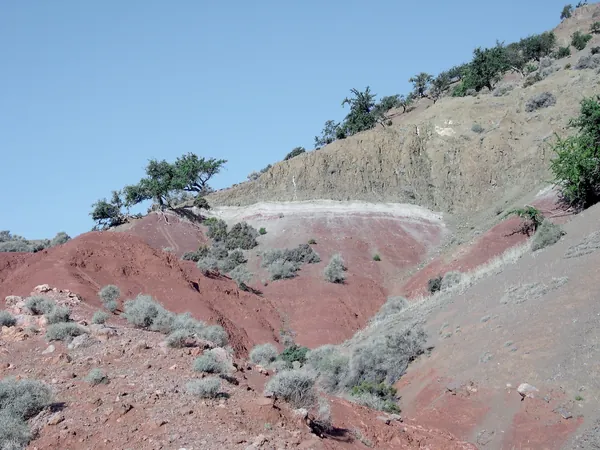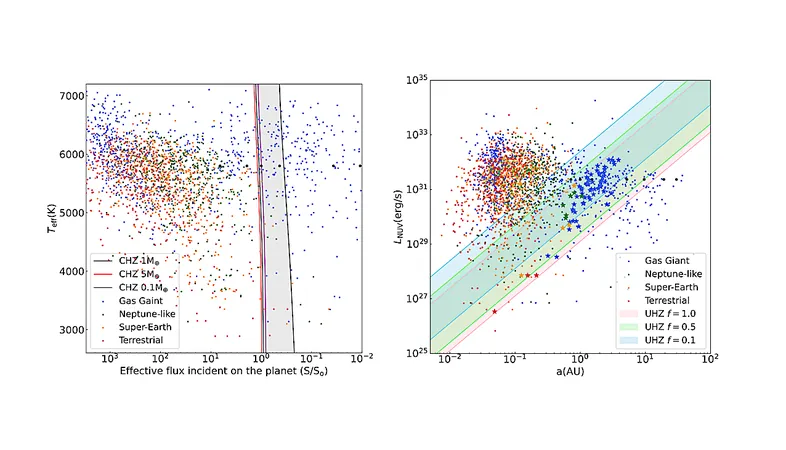
Dinosaurs’ Rise Linked to Ancient Volcanic Activity: A Chilling Revelation About Earth's Past
2024-10-28
Author: John Tan
Study Overview
A groundbreaking study published in the Proceedings of the National Academy of Sciences reveals new insights into the catastrophic events that led to the rise of dinosaurs 201.6 million years ago. Contrary to longstanding beliefs that suggest warming due to volcanic activity was the driving force behind the End Triassic Extinction, the new evidence points to rapid volcanic eruptions causing intense cooling, ultimately paving the way for the Jurassic period.
Mass Extinction Event
Approximately 201.6 million years ago, Earth experienced one of its most significant mass extinctions, where an astounding three-quarters of all species vanished. This event coincided with the eruption of the Central Atlantic Magmatic Province (CAMP), which tore apart the supercontinent Pangaea, altering geographical and climatic landscapes worldwide. Over an explosive span of about 600,000 years, billions of cubic miles of lava reshaped continents, setting a stage for significant ecological transformation.
Traditional Beliefs Challenged
Traditionally, scientists believed that the slow build-up of carbon dioxide from these eruptions led to a greenhouse effect that raised global temperatures to catastrophic levels, acidifying oceans and ultimately causing species collapse. However, the latest research indicates that instead of gradual warming, it was sustained volcanic winters resulting from violent eruptions that severely impacted the climate in much shorter time frames.
Sulfate Aerosols and Climate Impact
Lead author Dennis Kent, from Columbia Climate School's Lamont-Doherty Earth Observatory, emphasizes, "It's a tale of two types of volcanic by-products. Sulfates introduce instant cooling, while carbon dioxide has delayed warming effects. The volcanic episodes we are discussing occurred in lifetimes, not over millennia.” These findings suggest that immense clouds of sulfate particles released into the atmosphere during the initial phases of volcanic eruptions may have acted like a massive sunblock, cooling the planet and leading to freezing conditions that many Triassic species could not survive. While temperatures eventually rose due to carbon dioxide, the immediate impact from the sulfate aerosols was devastating.
Research Methodology
The study analyzed sedimentary records from various regions, including Morocco, Nova Scotia, and New Jersey, to track the magnetic properties of lava flows associated with CAMP. The researchers discovered that five significant lava pulses occurred over approximately 40,000 years, with eruptions happening within less than a century. This rapid succession of eruptions resulted in the release of a colossal amount of sulfates into the atmosphere, causing considerable environmental upheavals.
Fossil Evidence
The evidence is stark: layers of sediments right beneath the CAMP deposits contain fossils from a myriad of Triassic creatures, including early relatives of crocodiles, unique lizard species, and diverse tropical flora, all of which vanished almost simultaneously with the onset of CAMP eruptions.
Survival of Resilient Species
Interestingly, while these dramatic changes wiped out many species, small feathered dinosaurs and other resilient animals such as turtles and small mammals likely survived the harsh conditions. Their ability to adapt and find refuge in burrows might have allowed them to thrive in the post-extinction world, ultimately leading to their domination in the Jurassic period.
Conclusion and Implications
Paleontologist Paul Olsen, a co-author of the study, notes, "The concentrated nature of these eruptions had an extraordinary impact on the environment. When volcanic activity occurs in rapid succession, it poses far more significant disruptions than if the same volume of eruptions spread across an extended period." This research not only reshapes our understanding of how dinosaurs came to dominate the Earth but also sheds light on the complex interplay between volcanic activity and mass extinction events in Earth's history. As climate events continue to unfold today, understanding the past could provide crucial insights into the challenges we face in the present and the future.




 Brasil (PT)
Brasil (PT)
 Canada (EN)
Canada (EN)
 Chile (ES)
Chile (ES)
 España (ES)
España (ES)
 France (FR)
France (FR)
 Hong Kong (EN)
Hong Kong (EN)
 Italia (IT)
Italia (IT)
 日本 (JA)
日本 (JA)
 Magyarország (HU)
Magyarország (HU)
 Norge (NO)
Norge (NO)
 Polska (PL)
Polska (PL)
 Schweiz (DE)
Schweiz (DE)
 Singapore (EN)
Singapore (EN)
 Sverige (SV)
Sverige (SV)
 Suomi (FI)
Suomi (FI)
 Türkiye (TR)
Türkiye (TR)